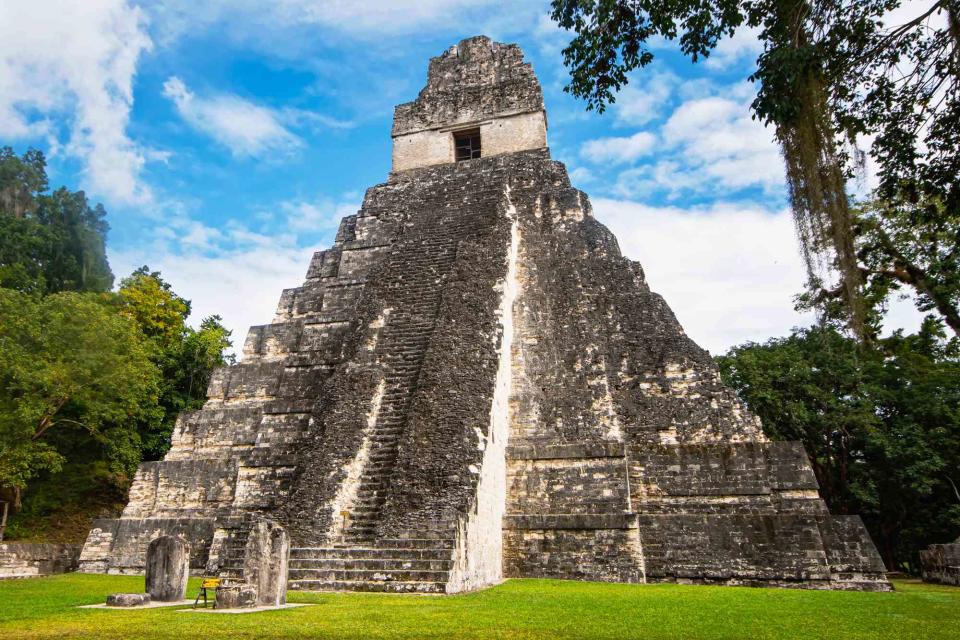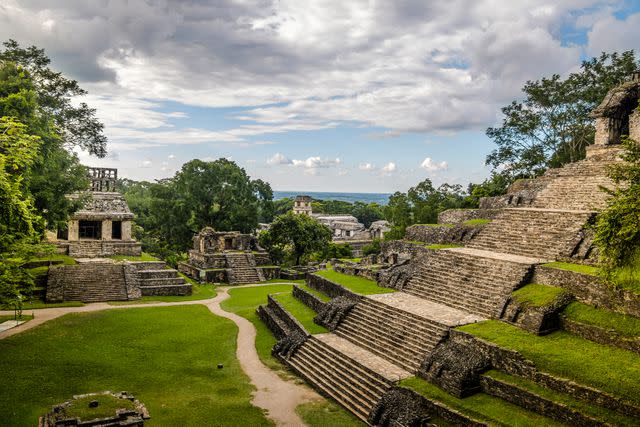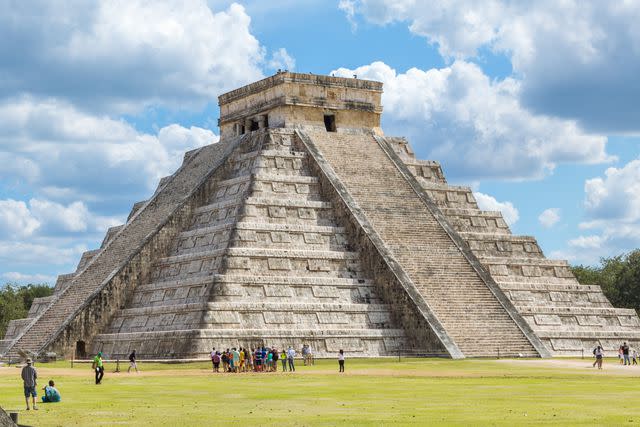Twins and Young Boys Were Sacrificed by Mayans, New DNA Analysis Reveals, Likely as Part of Hero Twins Myth
A study discovered that human remains found at a mass burial site were identified as boys between the ages of 3 and 6

Getty
A stock image of a Mayan pyramidNew research reveals that the Mayan empire would offer young boys, including twins, for human sacrifices in the ancient city of Chichén Itzá — linking the findings to the Hero Twins myth from sacred Mayan text.
Per a new study in the scientific journal Nature, researchers and paleogeneticists discovered that the victims who were buried at the site, on Mexico's Yucatán Peninsula, were either closely related or young boys — between 3 and 6 years old.
Four of those discovered were two sets of identical twins, and scientists believe this is due to the significance of twins in ancient Mayan mythology.
Those who were sacrificed and closely related corresponded with the sacred Mayan text, the Popol Vuh. The text details the sacrifice of a pair of twins after they lost to the gods in a ballgame. “[One of the brothers’ own twin sons] known as the Hero Twins, then go on to avenge their father and uncle by undergoing repeated cycles of sacrifice and resurrection to outwit the gods of the underworld,” the researchers wrote in Nature.
This latest finding rejects the popular theory that women and girls were sacrificed more often at the burial sites.

Getty
Temples of the Cross Group in Chiapas, MexicoResearchers analyzed genomes from the remains of dozens of children at the mass burial site near Sacred Cenote — a ceremonial site at a water-filled sinkhole in Chichén Itzá in the northern Yucatán Peninsula.
The recent findings were composed of analyses of 64 bodies out of the 100+ child remains recovered from a cistern close to the cenote. The location of the remains in a cistern aligns with researchers' theories that, at the time, subterranean structures were believed to be entrances to the underworld.
However, these remains were first discovered between April and June of 1967 when a new airport runway was being constructed. Given the long history, the teams collected a specific bone from each skull. Then, they used radiocarbon dating to establish that the children died over a period of 500 years until the middle of the 12th century.
Alongside the two pairs of identical twins, it was also discovered that a quarter of the remains tested had a close relative in the cistern. Researchers explain that this suggests “that the sacrificed children may have been specifically selected for their close biological kinship.”
Due to the inability to identify all the remains, researchers believe the number of related children could have been even higher.
Additionally, the remains that signified close relation also had consumed similar diets and were at a similar age when they died. As a result, researchers believe that the children were selected for sacrifice at the same ritual.

Getty
A stock image of a Mayan pyramidRelated: Kate Middleton and Prince William Look Like Tourists as They Visit Ancient Mayan Ruins in Belize
Considering both the age of the sacrifice and the burial site, researchers infer that Mayan rituals “were much more complex than just offering things to the gods because you need a favor or you need to ask for forgiveness,” lead author Rodrigo Barquera said, per The Washington Post.
Never miss a story — sign up for PEOPLE's free daily newsletter to stay up-to-date on the best of what PEOPLE has to offer, from celebrity news to compelling human interest stories.
Along with testing the remains, the study also compared the samples’ DNA with blood samples taken from 68 modern-day residents of Tixcacaltuyub, a town about 25 miles from the ancient site. After the tests, it was discovered that modern-day residents were related to the children found.
For more People news, make sure to sign up for our newsletter!
Read the original article on People.


